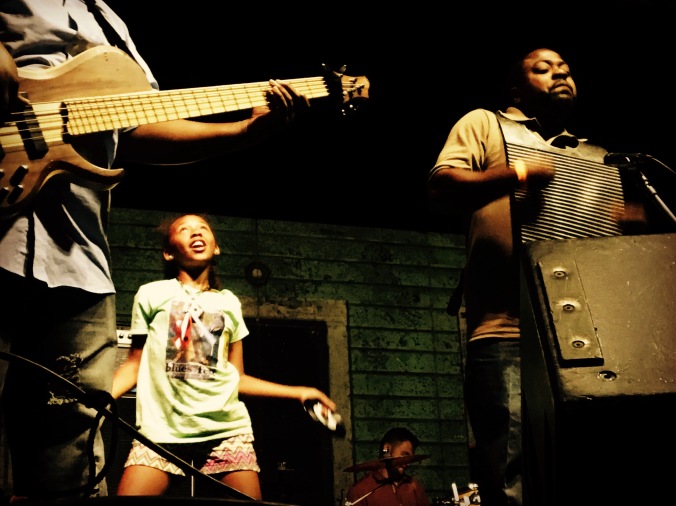 Did the musical conversations between musicians begin with nonverbal conversations between dancer and musician? How closely was the development of improvisation connected with dance? Was the solo first initiated by the dancers? If so, then dancers played a huge part in creating American music because along with the blues and syncopation, American music is defined by solos, conversation, and improvisation.
Did the musical conversations between musicians begin with nonverbal conversations between dancer and musician? How closely was the development of improvisation connected with dance? Was the solo first initiated by the dancers? If so, then dancers played a huge part in creating American music because along with the blues and syncopation, American music is defined by solos, conversation, and improvisation.

In New Orleans it all came together like a cross-bred seed the size of a city and grew like an oak tree the size of a country. It spread across the map like a big-ass oak tree and grew into the music we heard throughout the 20th century, and the music we listen to today.



So many influences came together down there in New Orleans, from a circle of cultural groups that reached down into the West Indies and up into the Delta, from the original people of the area and from the black people who were brought to various locations against their will, from Africa to the Americas, from internal and external elemental places that they were wise enough to notice and creative enough to capture, the waves and the wind, the shake of the trees and the flicker of the flame, the trickle of the rain and crash of thunder, the beat of the heart as it hunts and hates and loves, the movement of the body as it moves to show affection and cause reproduction. Movement inspired music, and music caused movement.
The people of New Orleans got together and before the twine frayed, they wove the music together into a tighten wound rope. But what caused the twine to fray, what caused the soloists to twirl out of the rope and do their own things? These things were still of course connected with where the music was going but leading the music into new directions, the rope pulling the soloist back into the pack as the soloist pulled the band down a new alley. It’s all so much like dancers busting out of the pack and doing their own things that one certainly has to wonder if these solo dancers were the ones the inspired these early soloists.
And if so, then its easy to see how dancers helped create something that influenced most forms of American music, from ragtime to rap and most everything in between. It’s just something to think about as we look back to try to figure out what happened to make this all come together.
And perhaps it’s even more important as we move forward into the future.
 Grab the hand of that man in the wheelchair and let him do his thing. Kick those folding chairs into the corner and stand up for what is right. We must let the music move. We must let the people dance.
Grab the hand of that man in the wheelchair and let him do his thing. Kick those folding chairs into the corner and stand up for what is right. We must let the music move. We must let the people dance.























